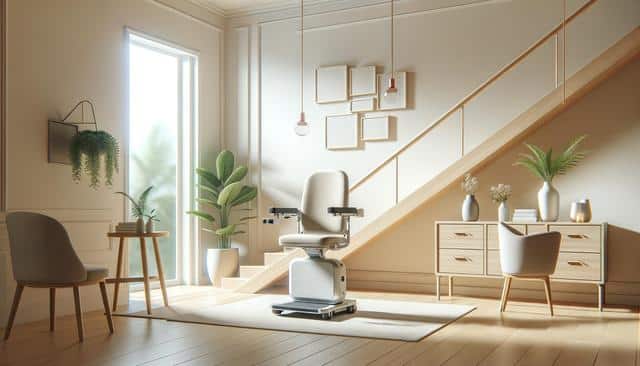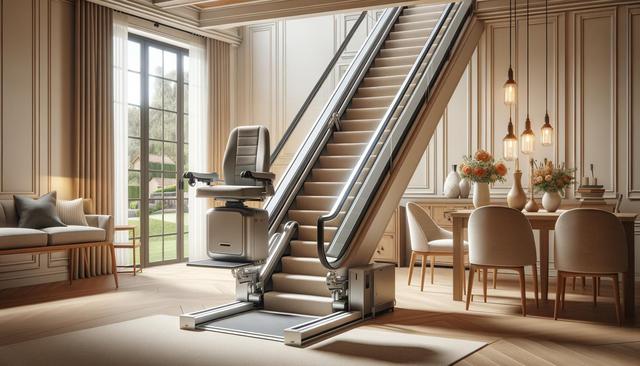
Stylish Mobility Aids for Seniors: Stay Independent with Style
Rethinking Mobility with Style and Innovation
As mobility assistive devices continue to evolve, a growing number of seniors are seeking options that not only support their physical needs but also reflect their personal style. One of the most significant advancements in this space is the development of mobile stairlifts—portable, versatile devices designed to help individuals navigate stairs safely and independently. Unlike traditional stairlifts that require permanent installation, mobile stairlifts offer flexible solutions that can be used in multiple locations, making them especially valuable for those who travel or live in multi-level homes.
These devices are becoming part of a broader trend within mobility aids for seniors that emphasizes both function and aesthetics. With sleek designs and modern materials, today’s mobile stairlifts can easily blend into home environments without drawing unwanted attention. Their contemporary appearance helps users feel more at ease, reducing the stigma often associated with assistive equipment. In many cases, mobile stairlifts are being coupled with other walking assistance devices for elderly individuals, creating a complete support system that prioritizes comfort and independence.
Understanding the Functionality of Mobile Stairlifts
Mobile stairlifts are engineered with safety and usability in mind. These devices typically consist of a motorized base, a comfortable seat or platform, and secure harnesses or safety belts. Designed for both indoor and outdoor use, they allow caregivers or users to transport individuals up and down stairs without significant physical strain. Some key features include:
- Foldable frames for easy storage and transport
- Rechargeable batteries for cordless operation
- Adjustable safety straps and ergonomic seating
- Durable wheels suitable for different stair surfaces
Such features make mobile stairlifts a practical addition to the array of walking assistance devices for elderly users. They are especially useful in temporary living situations, such as during recovery from surgery or when visiting locations without permanent stairlift installations. By integrating innovative engineering with user-friendly design, these devices offer a dependable and stylish solution for stair navigation.
Bridging the Gap Between Utility and Personal Expression
For many seniors, using mobility aids can feel like a compromise between practicality and personal dignity. Modern mobile stairlifts are addressing this challenge by incorporating elements of design that mirror everyday furniture or high-end medical equipment. This shift towards stylish mobility aids for seniors is a welcome change, allowing users to maintain their sense of self while managing physical limitations. When paired with other mobility assistive devices such as rollators or canes, these stairlifts can be part of a cohesive and visually appealing toolkit that supports daily living.
Manufacturers are increasingly consulting with users during the design process, resulting in devices that align with real-world needs and lifestyle preferences. Popular enhancements include:
- Color options that match home décor
- Minimalist hardware with clean lines
- Lightweight materials that don’t sacrifice durability
These thoughtful design choices are not only practical but also help users feel more comfortable and confident in their mobility solutions. Ultimately, the integration of aesthetic considerations into mobility aids for seniors is fostering a more positive attitude toward their use.
Benefits Beyond the Home Setting
While mobile stairlifts are undeniably useful in residential settings, their benefits extend far beyond the home. They are especially advantageous in public or semi-public environments such as hotels, libraries, and places of worship, where permanent accessibility features may not be available. For seniors who are active and enjoy exploring new locations, having access to a mobile stairlift can open doors—both literally and figuratively.
Families and caregivers also benefit from the portability and ease of use these devices offer. Transporting a loved one to a family gathering or on a short vacation becomes significantly less stressful when mobility aids are designed with flexibility in mind. In this way, mobile stairlifts complement other walking assistance devices for elderly individuals by expanding the range of accessible environments without the need for permanent structural changes.
Moreover, some community centers and senior programs are beginning to include mobile stairlifts in their accessibility planning, underscoring their growing role in public health and inclusion efforts. As awareness of these tools spreads, their adoption is likely to increase, further normalizing their use and encouraging continued innovation in mobility technology.
Choosing the Right Mobile Stairlift
Selecting a mobile stairlift involves several considerations, especially when balancing functionality and style. Factors such as weight capacity, battery life, ease of lifting and maneuvering, and compatibility with various stair types all play a role in the decision-making process. Seniors and their caregivers should also consider whether the device will be used frequently or only on occasion, as this can impact the features and price point that are most appropriate.
Here are a few tips to guide the selection process:
- Identify the primary use-case: daily use, travel, or occasional support
- Evaluate the space where it will be stored and used
- Test multiple models to compare comfort and usability
- Consult with a healthcare provider or occupational therapist
When combined with other mobility assistive devices, a well-chosen mobile stairlift can significantly enhance a senior’s ability to remain engaged in their community and maintain a high quality of life. By aligning practical needs with design preferences, these devices are transforming the way people think about aging and independence.
Conclusion: Embracing Mobility with Confidence and Style
Mobile stairlifts are an increasingly important part of the modern toolkit of mobility aids for seniors. As part of a broader movement toward design-conscious support devices, they help bridge the gap between functionality and personal expression. By enabling safer stair navigation in both private and public settings, these devices support a more active and connected lifestyle. When paired with other walking assistance devices for elderly individuals, mobile stairlifts offer a comprehensive and stylish solution for maintaining independence. As innovation continues in the field of mobility assistive devices, seniors can look forward to even more options that prioritize both their physical needs and their sense of self.


